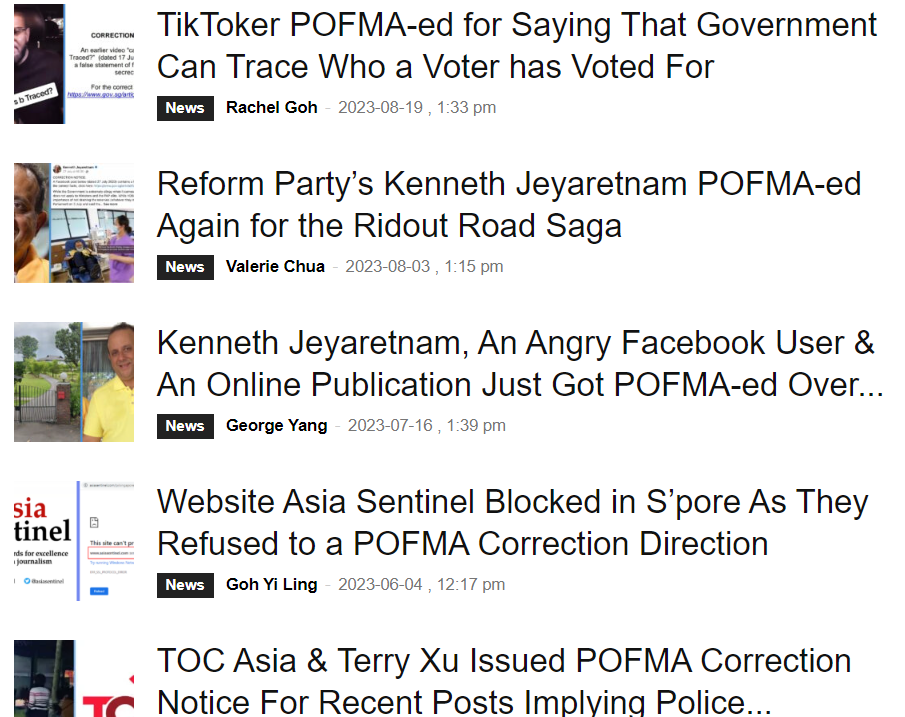Come on lah guys, it’s already 2024, why is chain mail still a thing?
By now, most of us should already know that any forwarded “news” on WhatsApp is probably fake.
After all, plenty of us went through the primary school “send this to 10 people by midnight to be safe” chain mail phase.
Anyway, if you were lucky enough to avoid that cringey phase, please don’t skip the end of this article to know more about chain mail so you don’t become that one weird guy who still forwards chain mail and fake news in the year 2024.
Bedok Shellfish Poisoning Rumours Are Just That – Rumours
Rumours circulating on WhatsApp about an outbreak of shellfish poisoning in Bedok are untrue, said the Singapore Food Agency (SFA) and the Ministry of Health (MOH) on 8 April.
On 6 April, SFA said that it had been notified by Malaysia’s Department of Fisheries (DOF) that mussels found in waters off Port Dickson are contaminated by biotoxins and are not safe for consumption.

This is due to harmful algae that cause mussels in Port Dickson waters to be contaminated, making them unsafe to eat. The algae does not affect other marine life such as fish, shrimp, crabs, and more.
SFA is working with importers to verify the source of their mussel imports, as well as to restrict any supply and sale of implicated mussels from Port Dickson.
Rumours on WhatsApp have been circulating, with one incorrectly saying that the “Bedok area is currently experiencing an outbreak of shellfish poisoning due to neurotoxins”.
The circulating rumour also says that some patients who went to the hospital are in “critical condition” before urging people to avoid eating any shellfish such as mussels, clams, scallops, oysters, or geoduck.
One thing everyone should know by now is that Singapore doesn’t import stuff from just one country.
Remember in May 2022 when the Malaysian chicken export ban was announced? In just a month, Singapore significantly increased its chicken supply from other countries like Indonesia and Thailand.
So, with this shellfish problem now, all is well and good because Singapore also imports mussels from other countries like China, Japan, and Vietnam.
If shellfish from Port Dickson isn’t safe for consumption, we still have other options.
About Shellfish Poisoning
MOH and SFA said that shellfish poisoning can be caused by ingesting shellfish contaminated with bacteria, viruses, or toxins produced by marine microorganisms.
Consumers can protect themselves by not harvesting and consuming shellfish from the wild, as these shellfish may contain biotoxins that cannot be removed by cooking.
Boiling shellfish for an extended period of time may (keyword: may) kill off bacteria, but there’s a good chance it may not deactivate the toxins they have already produced as shellfish toxins are largely heat stable.
Consumers are reminded that they should always only purchase shellfish from SFA-approved businesses, and avoid consuming raw or undercooked bivalves, especially for the young, elderly, immunocompromised, or pregnant.
If one experiences shellfish poisoning, symptoms usually occur within two hours of consumption and include abdominal pain, chills, diarrhoea, nausea, and vomiting.
Anyone who feels unwell after eating shellfish should immediately seek medical attention.
The Bottom Line
So, no, there is no shellfish poisoning outbreak in Bedok.
“So far, SFA has not detected any biotoxins in our seafood imports, including mussels, in the past few weeks,” said SFA.
Shellfish in Singapore is still safe to consume.
While the state of Melaka has banned the consumption of bivalves until “biotoxin reading reaches permissible levels and mussels are confirmed safe for consumption”, there is no such ban in Singapore, neither is there a need for it at the moment.
P.S. Send this article to your ahma and ahgong because there’s a good chance they’ve been forwarded (or have forwarded) the fake news on the bedok shellfish poisoning.
We’re no stranger to fake news.
That’s why we have POFMA lah.

Please be mindful of any news you see on WhatsApp, especially if the top of the message says “Forwarded” or “Forwarded many times”.

If something is hard to believe, there’s a good chance it’s untrue.
Review the facts yourself before sharing any information with others, lest you contribute to the spread of fake news.
One can check trusted news sites to see where the story came from. If a story is reported in multiple places and from trustworthy sources, it’s more likely to be true.
Fake news and chain mail aren’t all that different, really. They both have the aim of wanting to trick the reader into believing something false.
In the past, chain mail used to come in the mail (literal mail, like your mailbox kind) or via email. With the internet, sending chain mail is much easier and much much quicker today, allowing it to spread like wildfire.
While some chain mail are rather funny and harmless, some also contain death threats or scary stories.
Many chain mail contain a line that says “forward this message to at least 10 people” or something along those lines. Sometimes, it’s linked to a threat, saying “if you don’t want this to happen, send this to 10 friends.”
Be realistic here, your family is not going to suddenly drop dead if you do not forward a message to 10 friends.
Chain mail can look like this:

Reader: But the message above says the news can be seen on Google, NASA, and BBC News, so surely it’s true?
If I tell you I’m a Victoria’s Secret supermodel will you believe me?
Reader: …
Anyone can say anything, but it’s up to you to fact check before you believe them. A simple quick visit to any one of those sites will confirm that the message above is not true.
Be vigilant and protect yourself against fake news.
Actually, there’s a lot of protect yourself from online, such as online scams. Here are the top 10 scams in Singapore in 2023 as well as how to protect yourself against them.
